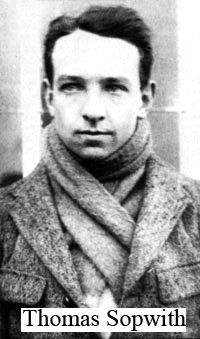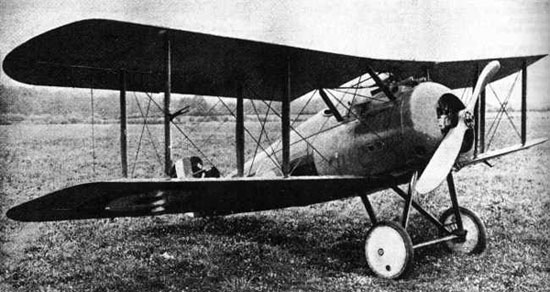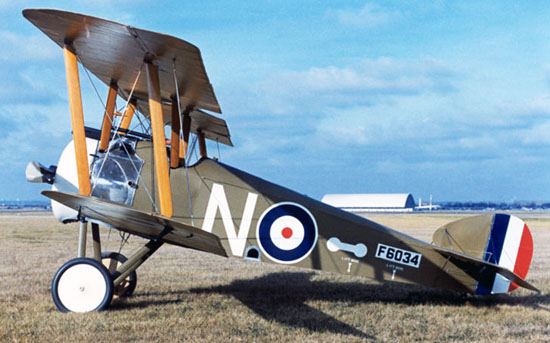The WW-I Sopwiths
Today, the brief ancestry of an airplane. The University of Houston's College of Engineering presents this series about the machines that make our civilization run, and the people whose ingenuity created them.
I've often pointed out that war does not drive the inventive part of technology. But then, neither does it slow invention very much. By 1918, WW-I had filled about thirty percent of the history of the airplane. Airplane speeds, for example, did increase during that time, but they did so by less than thirty percent. Airplane builders generally met the demands of war only a tad more slowly than they'd satisfied their peacetime craving for speed.
 Airplane maker Thomas Sopwith built his first airplane, a seaplane he called the Bat Boat, in 1913. Then he made a succession of airplanes all the way through the war. We can practically trace the history of wartime airplanes in this one man.
Airplane maker Thomas Sopwith built his first airplane, a seaplane he called the Bat Boat, in 1913. Then he made a succession of airplanes all the way through the war. We can practically trace the history of wartime airplanes in this one man.
He had a scout called the Tabloid ready when war began. It was pretty advanced for such a primitive biplane: two seats side by side, and a top speed of 92 miles-an-hour. While Sopwith played with the Tabloid's configuration, he developed more planes. His two-seat Strutter saw a lot of service. His Pup was a widely-used fighter. His Triplane might've been better than the Red Baron's erratic Fokker Triplane, but it was hard to repair and only a few were made before he was on to something new.
You see, Germany had gained aerial ascendency in late 1916 and was imposing terrible casualties on allied planes. The British finally began making the Sopwith Camel late that year. By so-called Bloody April of 1917, the slaughter was at its worst. But the Camel was now arriving in force and the tables turned again.
Light, unstable and highly maneuverable, the Camel was a fearsome weapon in a good pilot's hands. Fifty-five hundred of them were made, and today they're justly an icon of the WW-I air war. The Camel is the airplane that Snoopy imagined he was flying as he sat on his dog house crying, "Curse you, Red Baron."
Late in the war the steady progression culminated in yet another generation of fighters -- like the German Fokker D-VII and the French Nieuport 28. The best of the lot was probably the Sopwith Snipe. The Snipe appeared a scant three months before the Armistice. Canadian flier W. G. Barker was caught flying a Snipe two weeks before the war's end, by a swarm of fifteen Fokker D-VII's. He was wounded, passed out, recovered long enough to shoot one down, was hit again, passed out again ... Wounded three times, he still shot down four airplanes. And his Snipe got him home alive.
So, in five years, Sopwith and his designers had pushed airplane speeds from 92 to 125 miles an hour. He'd gradually improved the control, structure, and function of his planes. The Snipe even had a heated cockpit and room for a parachute.
Sopwith built a dozen or so different models, many better than others. The airplanes that you and I ride today did not stop clawing their way into existence out of the morass of wartime ideas. And that checkered progress managed to continue -- even during wartime.
I'm John Lienhard at the University of Houston, where we're interested in the way inventive minds work.
P.Cooksley, Sopwith Fighters in Action. (color by Don Greer) (Carrollton, TX: Squadron/Signal Pubs., Inc., 1991), No. 110. Public domain image of Sopwith above is courtesy of Wikipedia
As one writer observes, "The Sopwith Snipe represented the final evolution of the lightweight rotary engined fighter and in essence was the last of its kind as World War I aviation technology."
For more on war and technological change, see: J. H. Lienhard, How Invention Begins: Echoes of Old Voices in the Rise of New Machines.(New York: Oxford University Press, 2006): Chapter 8.

Sopwith Snipe, photo courtesy of Wikipedia

USAF photo of a Sopwith Camel -- probably an accurate replica since very few originals survive.